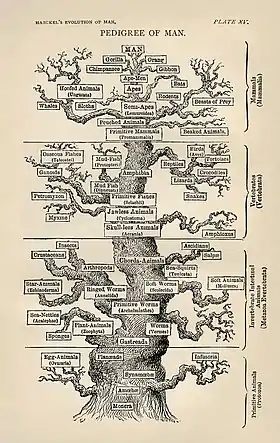Caveasphaera
Caveasphaera is a multicellular organism found in 609-million-year-old rocks in the Guizhou Province of South China, that is not easily defined as an animal or non-animal.[1][2][3][4][5] The organism is notable due to the study of related embryonic fossils (measuring about a half-millimeter in diameter)[1] which display different stages of its development: from early single-cell stages to later multicellular stages.[1][2][3][4] Such fossil studies present the earliest evidence of an essential step in animal evolution - the ability to develop distinct tissue layers and organs.[1] According to researchers, fossil studies of Caveaspaera have suggested that animal-like embryonic development arose much earlier than the oldest clearly defined animal fossils.[1] and may be consistent with studies suggesting that animal evolution may have begun about 750 million years ago.[2][6] Nonetheless, Caveasphaera fossils may look similar to starfish and coral embryos.[1] Still, researchers have concluded, "Parental investment in the embryonic development of Caveasphaera and co-occurring Tianzhushania and Spiralicellula, as well as delayed onset of later development, may reflect an adaptation to the heterogeneous nature of the early Ediacaran nearshore marine environments in which early animals evolved."[4]
| Caveasphaera | |
|---|---|
| Scientific classification | |
| Kingdom: | |
| Genus: | Caveasphaera |
| Binomial name | |
| Caveasphaera | |
See also
- Ikaria wariootia – Early bilaterian organism fossil species
- Life timeline – Life events since the formation of the Earth 4.54 billion years ago
- Organism – Any individual living physical entity
- Outline of biology – Hierarchical Wycklieffe Osano
- Outline of life forms – Overview of and topical guide to life forms
- Timeline of the evolutionary history of life – Current scientific theory outlining the major events during the development of life
- Urbilaterian – Possible simple urbilateran candidate
References
- Chinese Academy of Sciences (27 November 2019). "Researchers say animal-like embryos preceded animal appearance". EurekAlert!. Retrieved 28 November 2019.
- Zimmer, Carl (27 November 2019). "Is This the First Fossil of an Embryo? - Mysterious 609-million-year-old balls of cells may be the oldest animal embryos — or something else entirely". The New York Times. Retrieved 28 November 2019.
- University of Bristol (27 November 2019). "Animal Embryos Evolved Before Animals". Astrobiology.com. Retrieved 28 November 2019.
- Yin, Zongjun; et al. (16 December 2019). "The Early Ediacaran Caveasphaera Foreshadows the Evolutionary Origin of Animal-like Embryology". Cell. 29 (24): 4307–4314.e2. doi:10.1016/j.cub.2019.10.057. PMID 31786065. S2CID 208332041. Retrieved 28 November 2019.
- Staff (28 November 2019). "Animal-Like Embryos Evolved Long Before Complex Animals, Scientists Say". Sci-News.com. Retrieved 28 November 2019.
- Cunningham, John A.; et al. (5 December 2016). "The origin of animals: Can molecular clocks and the fossil record be reconciled?". BioEssays. 39 (1): e201600120. doi:10.1002/bies.201600120. PMID 27918074.
External links
- Biota (Taxonomicon)
- Life (Systema Naturae 2000)
- Vitae (BioLib)
- Wikispecies – a free directory of life

